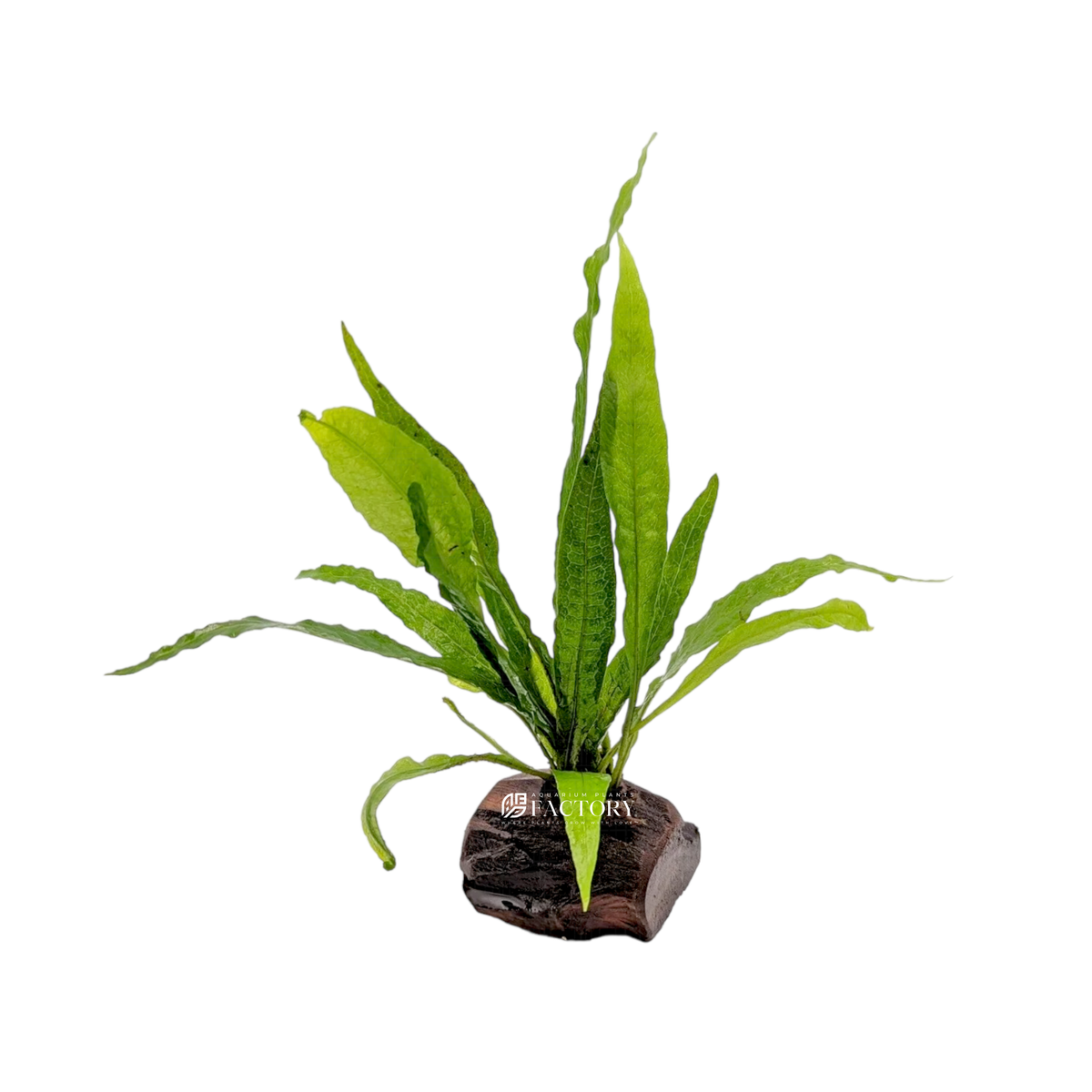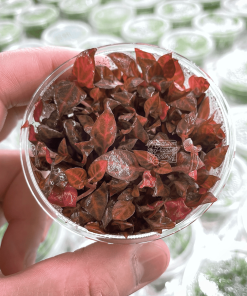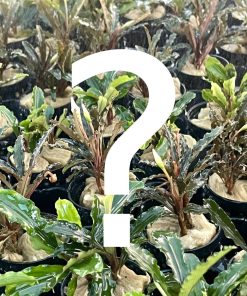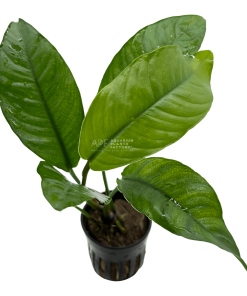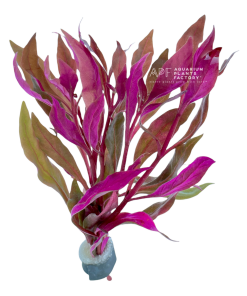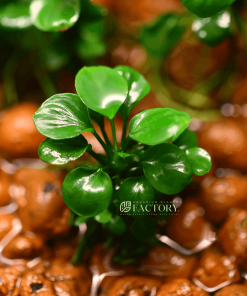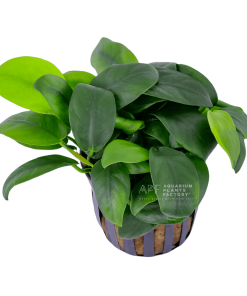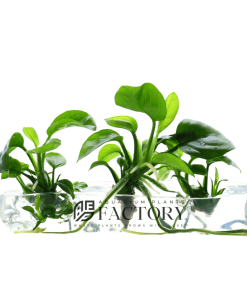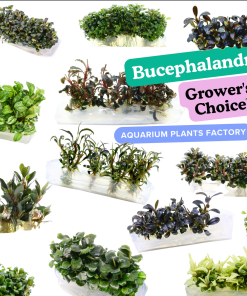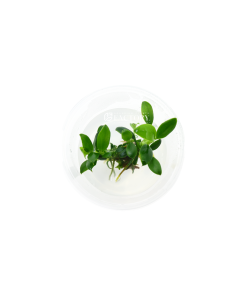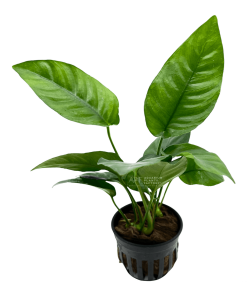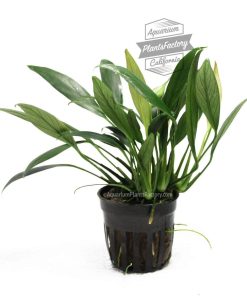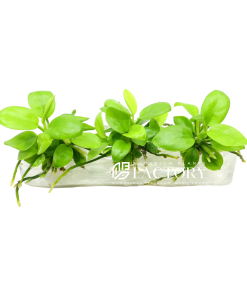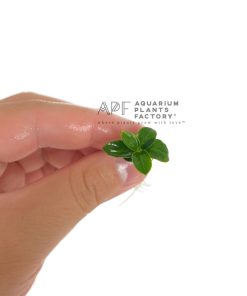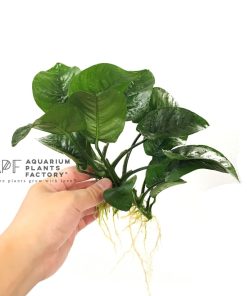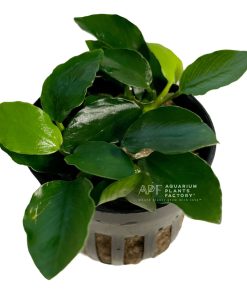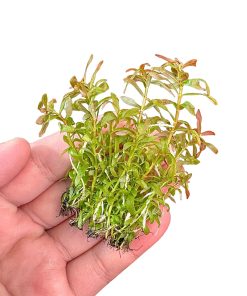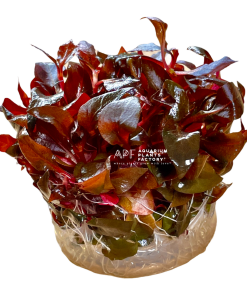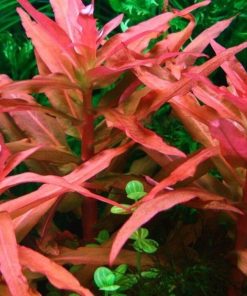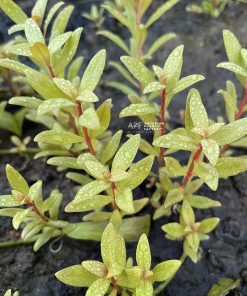Java Fern on Driftwood Aquarium Plants Factory
$ 15,99 $ 9,59
Java Fern (Microsorum pteropus) is a popular aquatic plant widely recognized for its aesthetic appeal and ease of care. Belonging to the family Polypodiaceae, this species is native to Southeast Asia and can be found in rivers, streams, and marshes. It has gained immense popularity among aquarium enthusiasts and aquascapers due to its unique characteristics and ability to thrive in various aquatic environments.
The Java Fern features distinctive fronds with dark green, leathery leaves that grow in a rhizome structure. The leaves are long, slender, and slightly crinkled, giving the plant an elegant and graceful appearance. Unlike many other aquatic plants, the Java Fern does not require planting in the substrate. Instead, it can be attached to driftwood, rocks, or other decorations using thread, fishing line, or adhesive. This unique feature makes it an ideal choice for aquascaping, as it adds a captivating vertical dimension to the aquarium layout.
One of the remarkable qualities of the Java Fern is its ability to tolerate a wide range of water conditions. It can thrive in both low-light and high-light environments, although it tends to grow more slowly in lower light conditions. Furthermore, it is highly adaptable to different water parameters, including pH levels ranging from slightly acidic to slightly alkaline, and water hardness varying from soft to hard. These attributes make the Java Fern a versatile and resilient plant suitable for both beginner and experienced aquarists.
Java Fern is known for its robust growth, and with proper care, it can develop into lush clusters or even form a dense forest of fronds. It propagates through the growth of daughter plants or small plantlets that emerge from the rhizome, which can be detached and replanted to create new clusters. It is important to note that the rhizome should not be buried in the substrate, as it may rot and lead to the plant’s decline.
In addition to its ornamental value, Java Fern provides several benefits to aquarium ecosystems. Its extensive root system helps absorb excess nutrients, thereby reducing the risk of algae growth. The dense foliage provides shelter for small fish, fry, and invertebrates, offering them a sense of security. Furthermore, Java Fern is compatible with a wide variety of fish species, including freshwater tropical fish, cichlids, and even some brackish water species.
Overall, Java Fern is a versatile and visually appealing aquatic plant that adds a touch of elegance to any aquarium. With its hardy nature, adaptability, and low maintenance requirements, it remains a popular choice among aquarists seeking to create beautiful and thriving underwater landscapes.
- Sold as a Plants on Small Driftwood. (Driftwood size: 2 inches)
Disclaimer: Pictures are not the actual plants you will receive, but a sample representation. Unless specific, we don’t guarantee aquatic plants will be free of pests, and pesticides, grow emerged or submerge.
|
Scientific Name |
Microsorum pteropus |
|
Synonyms |
Leptochilus pteropus |
|
Common Name |
Java Fern |
|
Plant Type |
Rheophyte / Epiphyte |
|
Placement |
Attached to driftwood, stone, or decorations |
|
CO2 |
Not required |
|
Growth Rates |
Slow |
|
Difficulty Level |
Easy |
|
Nutrient Substrate |
Not required |
|
Can it grow emerged? |
Yes |
|
Lighting Requirements |
Low – High |
Fast Shipping with Professional Packaging
Due to our longstanding partnership with UPS FedEx DHL and other leading global carriers, we can provide a range of shipping options. Our warehouse staff are highly trained and will pack the items according to our precise and exact specifications. Your products will be subjected to a thorough examination and will be safely packaged prior to being sent out. Every day, we send thousands of packages to customers from all over the world. This shows our commitment to being the largest retailer online in the world. The warehouses are located in Europe in the same way as they are in USA.
Note: Orders with more than one item will be assigned a processing date according to the item.
Before shipping Our team will conduct a thorough inspection on the products you ordered. The majority of orders are delivered within 48 hrs. The expected delivery time is 3 to 7 days.
Returns
The stock is constantly changing and cannot be fully controlled by us because of the involvement of multiple entities, including the factory as well as our warehouse. The actual stock levels can fluctuate at any point. Be aware that it is possible that your order will become unavailable even after you've placed your order.
Our policy lasts for 30 days. We are unable to return or exchange your purchase when it's been 30 days from the date of purchase.
To be returned, it must be unopened and in the same condition as when you received it in. It must also be returned in the original packaging.
Related products
Uncategorized
Home & Garden > Plants > Aquatic Plants
A Bucephalandra Species [Grower’s Choice] Aquarium Plants Factory
Uncategorized
Uncategorized
Uncategorized
Uncategorized
Home & Garden > Plants > Aquatic Plants
A Bucephalandra Species Tissue Culture [Grower’s Choice] Aquarium Plants Factory
Uncategorized
Home & Garden > Plants > Aquatic Plants
Uncategorized
A Bucephalandra Species Tissue Culture Premium Full Bag [Grower’s Choice] Aquarium Plants Factory
Uncategorized
Uncategorized
Uncategorized
Uncategorized
Uncategorized
Uncategorized
Uncategorized
Uncategorized
Uncategorized
Home & Garden > Plants > Aquatic Plants
Home & Garden > Plants > Aquatic Plants
Uncategorized
Home & Garden > Plants > Aquatic Plants
Uncategorized
Uncategorized
Uncategorized
Uncategorized
Uncategorized
